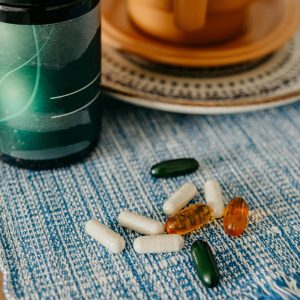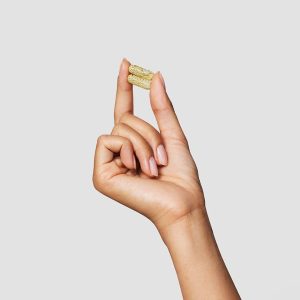
Hairspray, the trusty ally for taming frizz and holding hairstyles, has a hidden talent beyond the realm of hair care. Its unique formulation, containing solvents and polymers, can be surprisingly effective for certain cleaning tasks. Let’s explore the various ways hairspray can be utilized as a cleaning agent, from removing stains to polishing surfaces and tackling everyday household messes. Can you use hairspray to clean?
Stain Removal: Hairspray’s Secret Weapon
Hairspray’s solvent properties can help dissolve and lift certain stains, particularly those caused by ink or markers.
-
Ink Stains: Hairspray works wonders on ballpoint ink stains on fabrics or hard surfaces. Simply saturate the stain with hairspray, let it sit for a few minutes, then blot it with a clean cloth. Repeat the process if needed, and then launder the fabric as usual.
-
Permanent Marker Stains: Even stubborn permanent marker stains can sometimes be tackled with hairspray. Spray the stain generously, let it sit for a few minutes, then blot it with a clean cloth or paper towel. You might need to repeat the process several times for complete removal.
Stain Removal Tips
- Act Quickly: The sooner you address a stain, the better your chances of removal.
- Test in a Hidden Area: Before applying hairspray to a visible area, test it on a hidden spot to ensure it doesn’t damage the fabric or surface.
- Blot, Don’t Rub: Gently blot the stain with a clean cloth instead of rubbing, as this can spread the stain further.
Sticky Situations: Dissolving Adhesive Residue
Hairspray’s solvents can also help dissolve adhesive residue left behind by stickers, labels, or tape.
Sticker Removal
Spray hairspray generously on the sticker or label. Let it sit for a few minutes to penetrate the adhesive, then gently peel off the sticker.
Tape Residue
Spray hairspray on any sticky residue left behind by tape. Let it sit for a few minutes, then wipe it away with a damp cloth.
Adhesive Removal Tips
- Patience is Key: Allow the hairspray to sit for a few minutes to fully penetrate the adhesive before attempting to remove the sticker or residue.
- Gentle Scraping: If needed, use a plastic scraper or your fingernail to gently lift the sticker or residue. Avoid using sharp objects that could scratch the surface.
Polishing Power: Shining Up Surfaces
Hairspray’s alcohol content can help remove smudges and fingerprints from various surfaces, leaving them sparkling clean.
-
Stainless Steel Appliances: Spray a light mist of hairspray onto stainless steel appliances and wipe them with a clean, microfiber cloth. The hairspray helps remove fingerprints and streaks, leaving a polished finish.
-
Chrome Fixtures: Similarly, you can use hairspray to shine up chrome fixtures in your bathroom or kitchen.
-
Glass Surfaces: Hairspray can also be used to clean mirrors, windows, or other glass surfaces. Spray a light mist and wipe with a clean, lint-free cloth for a streak-free shine.
Polishing Tips:
- Use Sparingly: A light mist of hairspray is sufficient for most surfaces. Avoid excessive spraying, as it can leave a sticky residue.
- Microfiber Cloths: Use microfiber cloths for cleaning and polishing, as they are gentle and won’t scratch surfaces.

Other Surprising Uses: Hairspray’s Hidden Talents
Hairspray’s unique properties lend themselves to a few other surprising cleaning and household hacks.
- Preserving Artwork: A light mist of hairspray can help protect pencil or charcoal drawings from smudging.
- Removing Ink Stains: Hairspray can sometimes be effective in removing ink stains from fabrics. Saturate the stain with hairspray, let it sit for a few minutes, then launder the fabric as usual.
- Taming Flyaways on Fabrics: Lightly mist hairspray on fabrics like curtains or tablecloths to tame flyaways and static cling.
Hairspray, while primarily designed for hair styling, can also serve as a surprisingly effective cleaning agent for certain tasks. Its solvent and adhesive properties make it useful for removing stains, dissolving sticky residue, and polishing surfaces.
However, it’s important to use hairspray cautiously and sparingly for cleaning purposes. Always test it on an inconspicuous area first, avoid excessive spraying, and prioritize ventilation when using it indoors.
Remember, hairspray is not a replacement for dedicated cleaning products, but it can be a handy tool for tackling specific messes or adding a quick shine to surfaces around your home.
Safety First: Proceed with Caution
While hairspray’s versatility extends to cleaning, it’s important to exercise caution and prioritize safety.
-
Flammable: Aerosol hairsprays often contain flammable propellants. Avoid using them near open flames, heat sources, or sparks.
-
Ventilation: When using hairspray indoors, ensure adequate ventilation to avoid inhaling excessive fumes. Open windows or turn on exhaust fans.
-
Skin and Eye Contact: Avoid spraying hairspray directly onto your skin or eyes, as it can cause irritation or stinging. If accidental contact occurs, rinse the area thoroughly with water.
-
Material Sensitivity: Test hairspray on a hidden area of the surface before applying it to a larger or more visible area. Some materials, especially delicate fabrics or plastics, might be sensitive to the alcohol or other chemicals in hairspray.

Eco-Conscious Cleaning: Exploring Natural Alternatives
If you’re looking for eco-friendlier or less harsh cleaning alternatives, consider these options:
-
Vinegar: White vinegar, diluted with water, is a natural and effective cleaning agent for various surfaces. It can remove soap scum, hard water stains, and even disinfect surfaces.
-
Baking Soda: Baking soda is a mild abrasive that can be used to scrub away grime and stains. Mix it with water to create a paste or sprinkle it directly onto surfaces before wiping them clean.
-
Lemon Juice: Lemon juice, with its natural acidity, can help remove stains and brighten surfaces. Mix it with water or baking soda for a natural cleaning solution.
-
Essential Oils: Certain essential oils, like tea tree or lavender, have natural antibacterial and antifungal properties. Add a few drops to your cleaning solutions for a fresh scent and potential disinfecting benefits.
DIY Cleaning Recipes
-
All-Purpose Cleaner: Mix equal parts water and white vinegar in a spray bottle. Add a few drops of your favorite essential oil for fragrance. Use this solution to clean countertops, appliances, and other surfaces.
-
Glass Cleaner: Mix 1/4 cup of white vinegar, 1/2 cup of rubbing alcohol, and 2 cups of distilled water in a spray bottle. Use this solution to clean windows, mirrors, and other glass surfaces.
-
Stainless Steel Cleaner: Mix 1/4 cup of baking soda with 1 tablespoon of dish soap and enough water to create a paste. Apply the paste to stainless steel surfaces, let it sit for a few minutes, then wipe it away with a damp cloth.
Hairspray and Delicate Fabrics: Proceed with Caution
While hairspray can be a handy stain remover, exercise caution when using it on delicate fabrics or surfaces.
- Silk and Wool: Avoid using hairspray on silk or wool, as the alcohol content can damage these delicate fibers.
- Finished Wood: Hairspray can dull or damage the finish on wood furniture. It’s best to avoid using it on these surfaces.
- Painted Surfaces: Similarly, avoid using hairspray on painted surfaces, as it can strip away the paint or cause discoloration.

Conclusion
Hairspray, with its unique blend of solvents and polymers, can indeed be a surprisingly effective cleaning agent for specific tasks. From removing stains to dissolving sticky residue and polishing surfaces, it offers a handy solution for various household needs.
However, it’s important to use hairspray cautiously and sparingly for cleaning purposes. Always test it on an inconspicuous area first, avoid excessive spraying, and prioritize ventilation when using it indoors.
Remember, hairspray is not a replacement for dedicated cleaning products, but it can be a helpful tool for tackling specific messes or adding a quick shine to surfaces around your home.
By understanding its potential uses, limitations, and safety considerations, you can incorporate hairspray into your cleaning arsenal responsibly and effectively.





